The storage of vaccines in medical refrigeration is becoming increasingly challenging, as hospitals and other healthcare facilities continue to add new equipment that generates higher ambient temperatures. There are a variety of approaches that can be used when designing new required vaccines storage units, or when converting existing units for vaccine storage. This paper summarizes the current state-of-the art in vaccine refrigerator design, including an overview of the advantages and disadvantages of different kinds of refrigeration systems. Recommendations for specifying materials and construction practices for storing vaccines in temperature-controlled environments are presented, with specific emphasis on recent developments relating to the safety of wireless monitoring systems for vaccines.
However, significant energy reductions have made small-scale systems affordable and energy efficient. So how energy efficiency affects the selection of commercial refrigerator or freezer equipment for vaccine storage plus factors such as: temperature monitoring and humidity control; system design for long term useful life; the role of constant temperature monitoring; transportation requirements for transportable systems (freezers & refrigerated trucks); the future of medical refrigeration to include energy recovery systems such as ammonia or glycol loops or mechanical compressors.
In the medical field, vaccines are often stored in specialised vaccine fridges and freezers in Sydney. This practice ensures that they are maintained at the correct temperature and humidity levels. The effectiveness of a vaccine is highly dependent on its storage conditions, making the choice of appropriate refrigeration solutions crucial. Keeping vaccines in the right environmental conditions is of paramount importance at all times.
Vaccine storage should be done according to the following best practices:
- Vaccines should be stored in a refrigerator that has an alarm system for low temperatures so that when the fridge gets too warm or too cold, it will alert staff members immediately.
- The vaccines need to be stored in their original packaging, but this should not be opened until they are needed for use by patients or patients’ families. This prevents exposure to bacteria or viruses that could infect others who come into contact with them later on down the line (such as healthcare workers).
- The refrigerator should be cleaned every day and checked for any leaks or other problems that may affect its function as well as safety measures such as alarms going off due to sudden changes in temperature within the unit itself (such as if someone leaves a door open).
- Vaccine storage is critical to the safety and efficacy of vaccines. Vaccines must be stored at the correct temperature and under conditions that prevent deterioration, contamination, and loss of potency.
The CDC states that vaccine manufacturers should be consulted for specific recommendations on vaccine stability and storage conditions. However, the following general guidelines may help determine proper vaccine storage:
Vaccine manufacturers should be consulted for specific recommendations on vaccine stability and storage conditions. However, the following general guidelines may help determine proper vaccine storage:


Find the right Vaccine Fridge
Compare quotes from expert Australian suppliers and make the best choice. It's free, quick and easy!
Freezer transport and handling
Vaccines should be transported at or below –20°C (–4°F) or colder whenever possible. If a carrier cannot maintain temperature below –20°C (–4°F), then it should be kept frozen during transport. The CDC recommends storing vaccines in a freezer until they are used to minimize the potential for loss of potency caused by freeze–thaw cycles. If a carrier cannot maintain temperature below –20°C (–4°F), then it should be kept frozen during transport. The CDC recommends storing vaccines in a freezer until they are used to minimize the potential for loss of potency caused by freeze–thaw cycles.
Vaccines are a staple of modern medicine. They are used to prevent and treat a wide range of infectious diseases. Their importance cannot be overstated.
One of the most important factors in vaccine storage is maintaining their effectiveness. Unfortunately, vaccines are sensitive to temperature and can be damaged by improper storage.
The Role of Energy Efficiency in Selecting a Medical Refrigerator or Freezer
One of the first things that people look at when purchasing a medical refrigerator or freezer is how much energy it consumes. This is understandable because many facilities are looking for ways to reduce their carbon footprint and save money on their utility bills. However, there are several other factors that should also be considered when choosing an energy efficient medical refrigerator or freezer:
- Flexibility – The ability to adapt to changing conditions is very important in today’s healthcare industry where budgets are tight and staffing levels fluctuate regularly. Flexibility allows facilities to maximize their budget while minimizing waste by being able to accommodate different types of vaccines at different temperatures without having to purchase multiple refrigerators or freezers for each type of vaccine you store.
- Durability – A durable medical refrigerator or freezer will last longer than one that isn't made from quality materials and components.
Temperature Monitoring in Medical Refrigeration: What You Need to Know
Temperature monitoring is an important tool for medical refrigeration. It allows you to ensure that your equipment is working properly, which is vital for patient safety.
Here are some facts you should know about temperature monitoring in medical refrigeration:
- Temperature monitoring is a key component of any medical refrigeration system. Temperature monitoring ensures that the temperature of the storage area is correct and that the cooling unit is running efficiently. It also lets you know when something goes wrong with your system so you can make repairs before someone gets hurt.
- Temperature monitoring systems help prevent foodborne illnesses by ensuring that food items stay within safe temperature ranges at all times. If foods reach unsafe temperatures, they can become dangerous for people to eat and cause serious illness or even death if consumed.
- Temperature monitoring systems also help prevent spoilage of perishable products like vaccines, IV solutions, blood products, organs and tissue samples. These items must be maintained at specific temperatures at all times to ensure they remain viable and usable as medicines or research materials.
- With the growing number of vaccines and the increased prevalence of vaccine-preventable diseases, medical refrigeration has become a critical component of maintaining a safe and effective vaccine supply chain. While there are many options for vaccine storage in medical refrigeration, it is important to know what works best for your facility.
- Vaccine storage temperatures should be maintained between 2°C and 8°C (36°F and 46°F). These temperatures ensure that vaccines remain potent until they are used. When vaccines are stored at higher or lower temperatures, they lose potency faster than intended.
There are several types of medical refrigeration units available for storing vaccines:
- Walk-in freezers - Walk-in freezers can be used to store larger quantities of vaccines, but they require more floor space than other types of equipment. They should only be used if your facility has an adequate amount of space available.
- Stand-alone or integrated units - Stand-alone units may be more affordable than integrated units because they do not require additional electrical connections in order to function properly. However, integrated units often have better energy efficiency ratings due to their ability to operate at low temperatures without requiring much energy from external sources like electricity or gas.
- Vaccines are a key component of medical refrigeration. They are the front lines in the fight against infectious diseases, and hundreds of millions of people rely on them every year to protect themselves and their families.
- The storage temperature range for most vaccines is between 2°C and 8°C (35°F and 46°F). Vaccines can be easily damaged by improper storage conditions, so it's important to understand how to store them properly.
Here are some best practices on vaccine storage:
- Use the right size refrigerator. Vaccines should be stored in a proper refrigerator designed specifically for vaccine storage. A typical hospital pharmacy uses a refrigerator designed for pharmaceuticals that has an insulated door and separate compartments for each type of vaccine. This kind of refrigerator is specially designed to prevent any cross-contamination of vaccines from other drugs or products stored in the same room. If you are using a standard household refrigerator or freezer as your home medical refrigerator, make sure it is large enough to hold all your vaccines at once without having to open the door too often — this will help keep them cooler longer without having to turn off the power!
- Keep vaccines cold during transport. When transporting vaccines from one location to another, make sure they're kept cold by using plastic.
- Vaccines are sensitive to temperature and humidity. Improper storage conditions can result in loss of potency, or complete inactivation of the vaccine. Most vaccines require storage at 2-8°C (35-46°F).
- Vaccine storage refrigerator should be cleaned regularly to prevent contamination. It is important to store all vaccines at the same temperature so that they do not become mixed up and administered at incorrect doses.
The following steps should be followed when handling vaccines:
- Do not touch the tip of the vial or syringe when removing a vaccine from its package and do not hold it close to your face.
- Do not touch the tip of the vial or syringe when removing a vaccine from its package and do not hold it close to your face.
- Do not use a syringe with a damaged plunger or needle cover, as this may cause contamination of the contents. If there is any damage or leakage, discard immediately.
- Keep vaccines away from extreme temperatures (such as heaters) and direct sunlight.
To ensure the safety and effectiveness of vaccines, it is essential to follow best practices for vaccine storage in medical refrigeration. This includes using refrigerators with alarm systems for temperature deviations, storing vaccines in their original packaging, regularly cleaning and inspecting the refrigerator, maintaining proper temperature and humidity levels, consulting vaccine manufacturer guidelines, properly handling vaccines during transportation, and considering the use of wireless monitoring systems. By adhering to these practices, healthcare facilities can ensure the integrity of vaccines and safeguard public health.

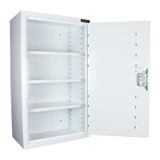
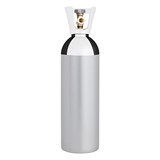
-160x160-state_article-rel-cat.png)

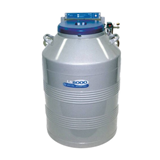
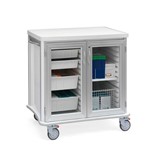
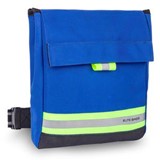

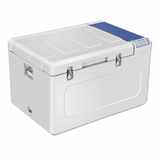

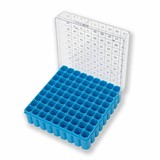
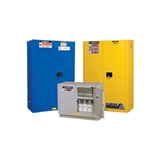
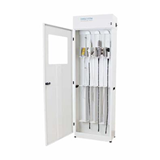

-205x205.png)